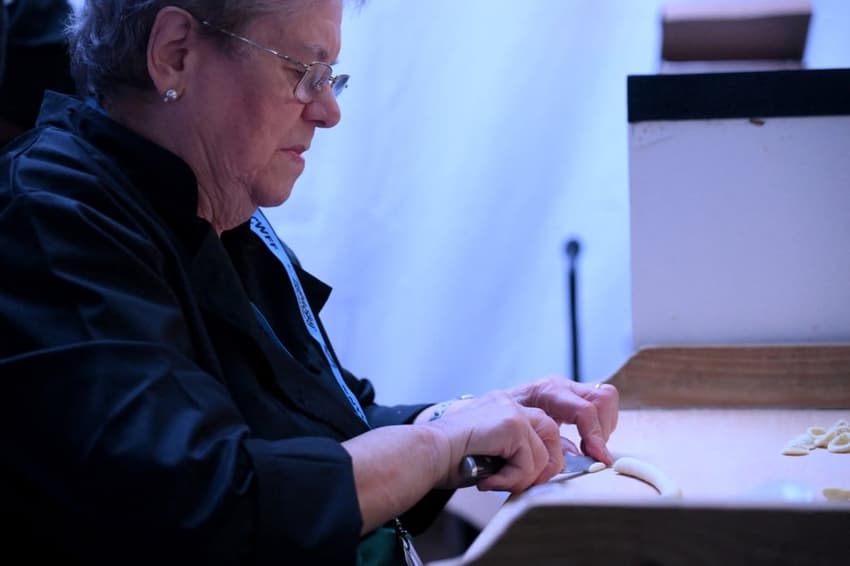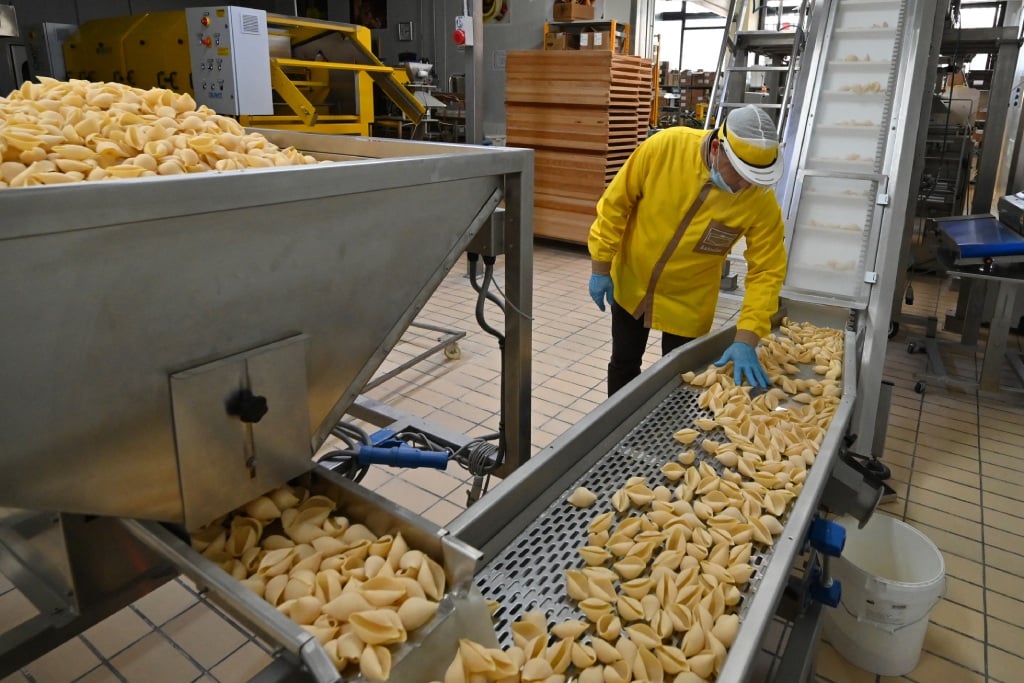How many different types of pasta are there in Italy?

Italy is the motherland of pasta. But, from spaghetti to penne to fusilli, exactly how many different shapes will you find in the country?
Pasta is the cornerstone of Italian cuisine and, quite famously, Italians just can’t get enough of it.
According to estimates from consumer group Coldiretti, every Italian eats some 23.1 kilograms of pasta every year – that’s nearly two kilograms a month, and around half a kilo a week.
But how do they never get tired of it, you may wonder?
One of the main reasons behind Italians’ unbreakable bond with pasta is the variety. There’s a whole range of pasta shapes, and, of course, associated sauces, that people can choose from and experiment with.
Though the exact number is not known, it’s generally thought that there are over 350 types of pasta in Italy, which means that you could potentially eat a different pasta shape every day of the year (though this is a challenge that we at the Local may not take up anytime soon).
But why are there so many pasta shapes to begin with?
Though an element of creativity cannot be ruled out (after all, there is such a thing as culinary art), the main reason behind the huge variety of pasta shapes available in Italy is down to different degrees of ‘affinity’ with the sauce being used, meaning that each type of pasta is designed to best express the flavours and peculiarities of a particular sauce.
READ ALSO: Ask an Italian: How do you sauce pasta properly?
So for instance, many types of pasta corta (short pasta), including fusilli (corkscrew-shaped pasta), rigatoni (hollow cylindrical pasta with ridged sides) and maccheroni are generally served with fairly dense sauces, especially meat ragù and ricotta-based sughi, as they allow to better ‘scoop up’ all the goodness they’re paired with.

'Conchiglie' (seashell-shaped) pasta on a factory production line in April 2020. Photo by ANDREAS SOLARO / AFP
Meanwhile, pasta lunga (long pasta) like spaghetti, vermicelli (slightly thicker than spaghetti) and linguine (flat noodles similar to bavette) are generally served with lighter sauces, including tomato and pesto sauces, as the swirling motion ‘traps’ the sauce between the noodles.
There are also numerous types of pasta that are almost exclusively used in soups, including stelline (small star-shaped pasta) and ditalini (small tube-shaped pasta), as these can be easily picked up with a kitchen spoon.
Finally, some types of pasta are available in two (or more) slightly different versions. For instance, penne rigate (ridged penne) have a ‘smooth’ counterpart: penne lisce. The same goes for spaghetti, which are available in different diameters in most Italian supermarkets.
READ ALSO: Ask an expert: Ten golden rules for cooking pasta like an Italian
That said, while there are literally tens of dozens of pasta shapes they can choose from, Italians do have some favourites.
According to Unione Italiana Food, spaghetti take the crown of best-loved Italian pasta type, with penne rigate and fusilli claiming the second and third spot respectively.
The top 10 is then completed by: rigatoni, farfalle, linguine, lumachine, bucatini, mezze maniche and lasagne.
What’s your favourite Italian pasta shape? Let us know in the comments below.
Comments (1)
See Also
Pasta is the cornerstone of Italian cuisine and, quite famously, Italians just can’t get enough of it.
According to estimates from consumer group Coldiretti, every Italian eats some 23.1 kilograms of pasta every year – that’s nearly two kilograms a month, and around half a kilo a week.
But how do they never get tired of it, you may wonder?
One of the main reasons behind Italians’ unbreakable bond with pasta is the variety. There’s a whole range of pasta shapes, and, of course, associated sauces, that people can choose from and experiment with.
Though the exact number is not known, it’s generally thought that there are over 350 types of pasta in Italy, which means that you could potentially eat a different pasta shape every day of the year (though this is a challenge that we at the Local may not take up anytime soon).
But why are there so many pasta shapes to begin with?
Though an element of creativity cannot be ruled out (after all, there is such a thing as culinary art), the main reason behind the huge variety of pasta shapes available in Italy is down to different degrees of ‘affinity’ with the sauce being used, meaning that each type of pasta is designed to best express the flavours and peculiarities of a particular sauce.
READ ALSO: Ask an Italian: How do you sauce pasta properly?
So for instance, many types of pasta corta (short pasta), including fusilli (corkscrew-shaped pasta), rigatoni (hollow cylindrical pasta with ridged sides) and maccheroni are generally served with fairly dense sauces, especially meat ragù and ricotta-based sughi, as they allow to better ‘scoop up’ all the goodness they’re paired with.

Meanwhile, pasta lunga (long pasta) like spaghetti, vermicelli (slightly thicker than spaghetti) and linguine (flat noodles similar to bavette) are generally served with lighter sauces, including tomato and pesto sauces, as the swirling motion ‘traps’ the sauce between the noodles.
There are also numerous types of pasta that are almost exclusively used in soups, including stelline (small star-shaped pasta) and ditalini (small tube-shaped pasta), as these can be easily picked up with a kitchen spoon.
Finally, some types of pasta are available in two (or more) slightly different versions. For instance, penne rigate (ridged penne) have a ‘smooth’ counterpart: penne lisce. The same goes for spaghetti, which are available in different diameters in most Italian supermarkets.
READ ALSO: Ask an expert: Ten golden rules for cooking pasta like an Italian
That said, while there are literally tens of dozens of pasta shapes they can choose from, Italians do have some favourites.
According to Unione Italiana Food, spaghetti take the crown of best-loved Italian pasta type, with penne rigate and fusilli claiming the second and third spot respectively.
The top 10 is then completed by: rigatoni, farfalle, linguine, lumachine, bucatini, mezze maniche and lasagne.
What’s your favourite Italian pasta shape? Let us know in the comments below.
Join the conversation in our comments section below. Share your own views and experience and if you have a question or suggestion for our journalists then email us at [email protected].
Please keep comments civil, constructive and on topic – and make sure to read our terms of use before getting involved.
Please log in here to leave a comment.